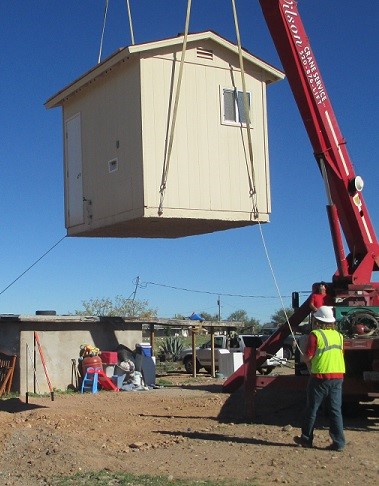Safe Water and Waste Disposal Facilities
ISSUE
Adequate sanitation facilities are lacking in approximately 41,000 American Indian and Alaska Native homes (or 11 percent). Of these homes approximately 5,200 (or 1.4 percent) lack access to a safe water supply and/or waste disposal facilities, compared to less than one percent of homes for the U.S. general population.
BACKGROUND

Families with satisfactory environmental conditions in their homes, which include safe water and sewerage systems, require appreciably fewer medical services and place fewer demands on the Indian Health Service and tribal primary health care delivery system. The Indian Sanitation Facilities Act, Public Law 86-121, authorizes the IHS to provide essential sanitation facilities, such as safe drinking water and adequate sewerage systems, to Indian homes and communities.
The IHS Sanitation Facilities Construction Program is a preventative health program that yields positive benefits and is a good investment. Access to water and waste water disposal facilities has been shown to reduce cases of respiratory, skin and soft tissue, and gastro enteric disease. It is estimated the water and waste water projects funded in fiscal year 2023 will save more than $384 million in direct healthcare cost alone related to respiratory, skin and soft tissue, and gastro enteric diseases. This translates to every $1 spent on water and sewer infrastructure saving $0.76 in avoided direct healthcare costs related to these diseases. This estimated saving averaged $0.97 between FY 2019 to FY 2023. This savings is trending lower since due to the mixture of projects funded having a higher capital cost and benefiting fewer homes. It’s widely accepted that the economic and non-economic benefits of water and sanitation service are much broader. The IHS Sanitation Facilities Construction Program has been the primary provider of these services since 1960.
STATUS
There is a backlog of 1,346 needed sanitation facilities construction projects. The cost to provide all American Indians and Alaska Natives with safe drinking water and adequate sewerage systems in their homes is estimated to be $4.66 billion. Inflation, new environmental requirements, aging infrastructure, and population growth add to the backlog of projects. The Infrastructure and Investment Jobs Act has provided funding in the amount of $3.5 billion to help address this backlog. In addition to providing safe sanitation facilities to existing homes, the IHS also provides sanitation facilities to new homes.
ONGOING COLLABORATION
The IHS, in consultation with tribes, annually identifies sanitation facility needs. The IHS and tribes will continue to collaborate with other federal agencies, states and organizations to provide needed resources for these essential facilities.
ADDITIONAL INFORMATION
Visit the IHS Division of Sanitation Facilities Construction.
January 2024
Download this Fact Sheet [PDF - 177 KB]


